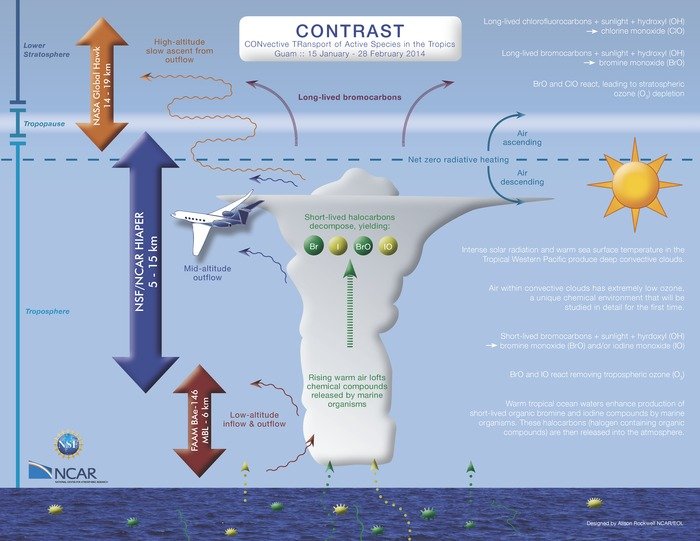Credit: National Center for Atmospheric Research
BOULDER, Colo., Jan. 7 (UPI) -- Atmospheric scientists say they're on their way to the western tropical Pacific Ocean to study the region's "global chimney" effect on the world's climate.
With the warmest ocean waters on Earth, the western tropical Pacific fuels a sort of chimney whose output has global reach, lofting vast quantities of air from the lower atmosphere to the stratosphere and influencing atmospheric chemistry over wide areas.
"To figure out the future of the air above our heads, we need to go to the western Pacific," project investigator Laura Pan with the National Center for Atmospheric Research in Boulder, Colo., said.
"This region has been called the holy grail for understanding global air transport, because so much surface air gets lifted by the storms and then spreads globally."
More than 40 scientists from NCAR, the University of Maryland, the University of Miami, other universities across the country and NASA are taking part in the project, dubbed CONTRAST or Convective Transport of Active Species in the Tropics, an NCAR release said Tuesday.
Based in Guam, where surrounding waters have the world's highest sea surface temperatures of open oceans, the project featuring heavily-instrumented aircraft will give researchers an especially detailed view of the air masses over the Pacific with a vertical range spanning tens of thousands of feet.
"There are so few measurements of atmospheric composition in this important region of the atmosphere that we expect to be able to significantly advance our understanding with the data we will be able to collect during CONTRAST," Elliot Atlas of the University of Miami, a project principal investigator, said.















